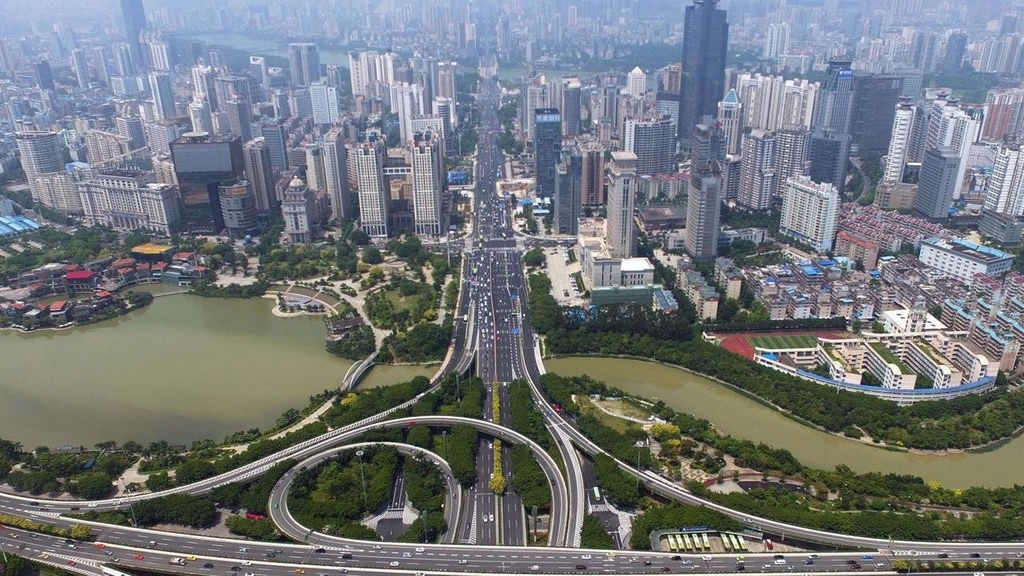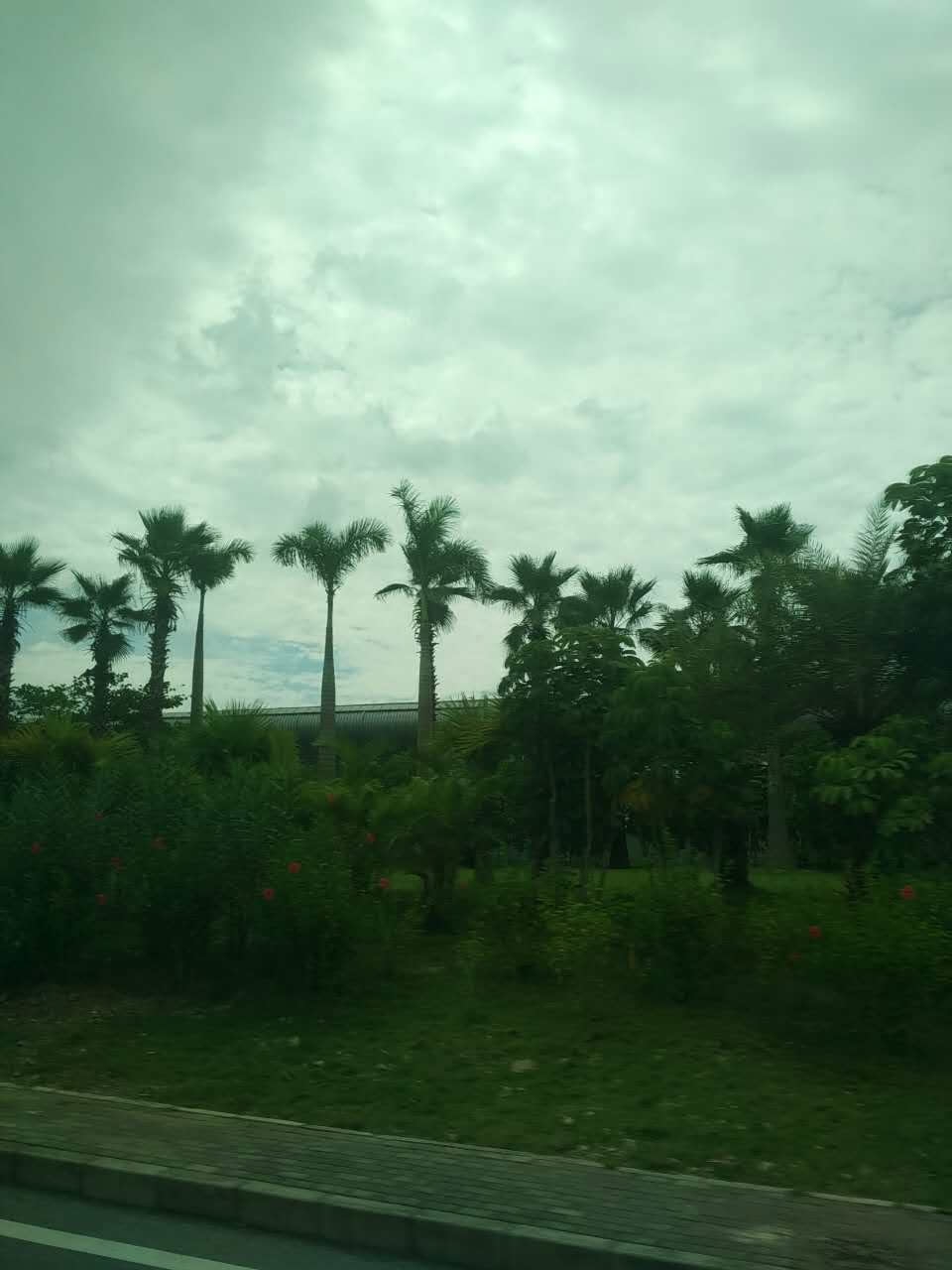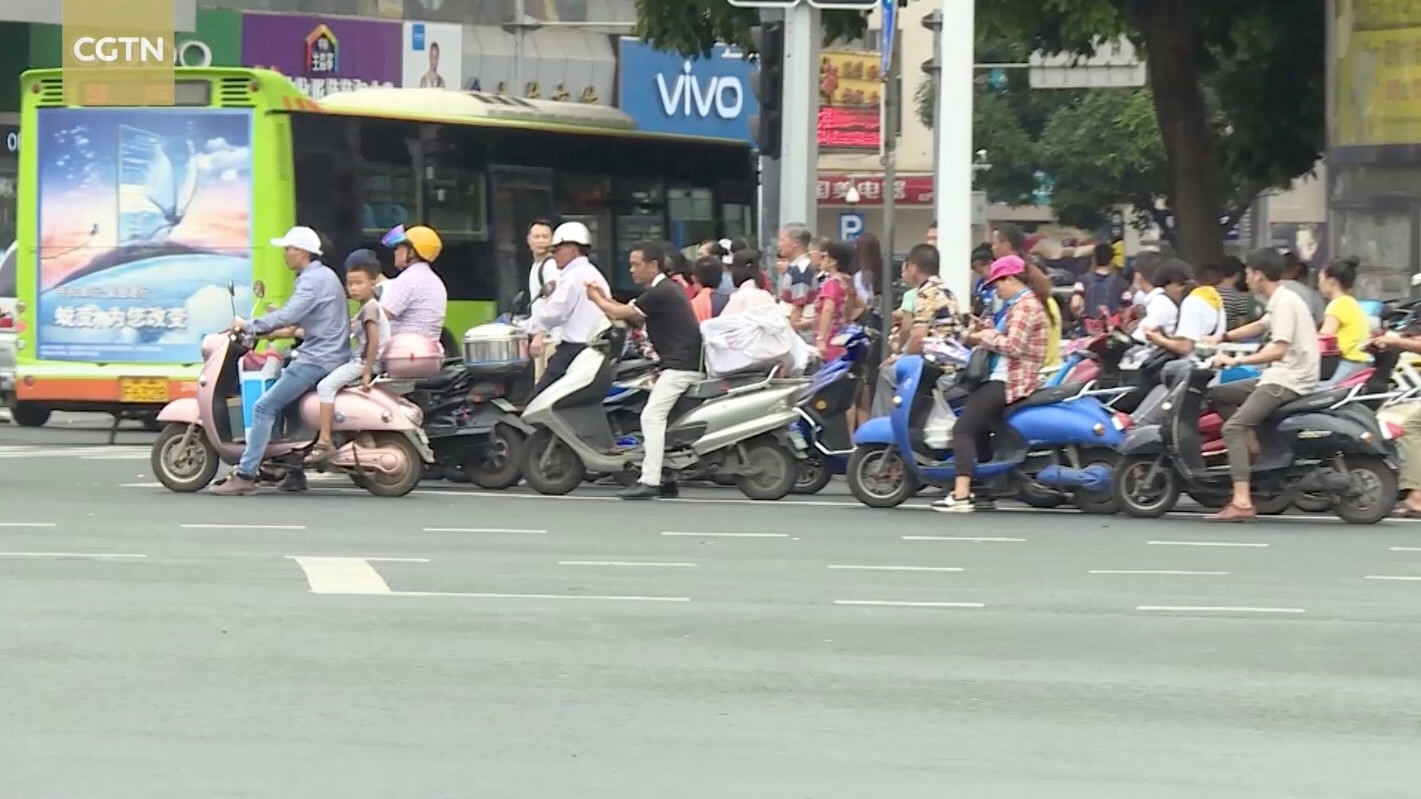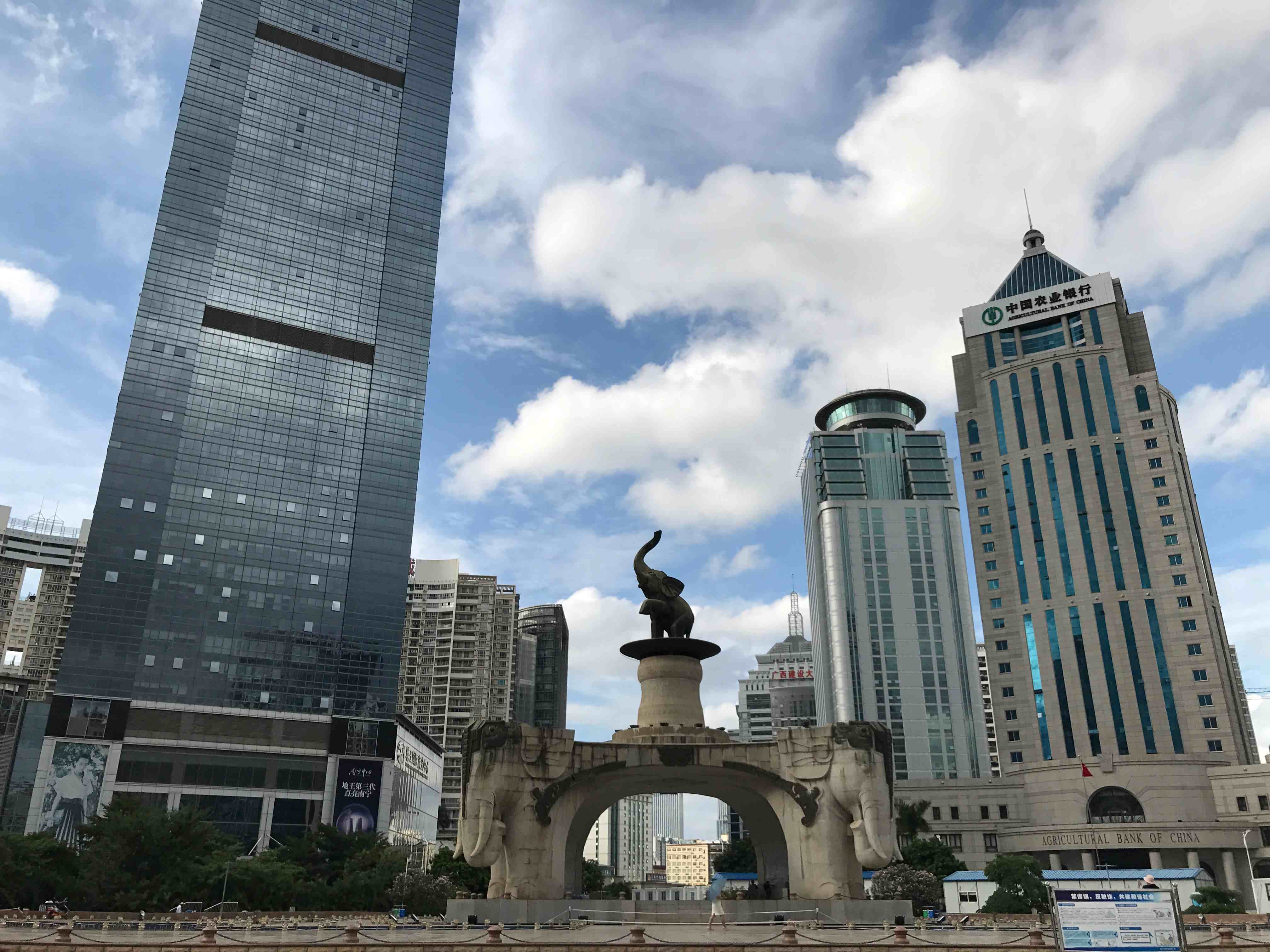
Culture
17:51, 11-Sep-2017
Nanning – the many-faced city
Nadim Diab

The weather forecast had predicted thunderstorms and showers and some of my friends had warned me of a city that urban development had overlooked. I was prepared for an unpleasant experience – skies bereft of color, puddles of mud conspiring to stain my pants and slyly knock me to the ground and a desolate urban space where life comes to a standstill with the sun setting.
But, boy was I wrong.
Nanning welcomed us with a sea of fluffy white clouds hanging over swathes of verdure, and a sun shining so bright that the vexing idea of autumn approaching evaporated as the plane began its descent.
Rain is always a possibility when visiting a region with subtropical climate, but on Monday we dodged the wetness – though we were not as lucky (and dry) the next morning.

Palm trees are common sights in Nanning. /CGTN Photo
Palm trees are common sights in Nanning. /CGTN Photo
Despite stifling humidity, there is something fresh and crisp about the city – and it is not just the air. Right outside Nanning Wuxu International Airport is a scene one does not normally associate with such facility: Instead of a concrete jungle, palm trees, lush vegetation and a floral festival gave us something to gawk at. In the horizon, mountains stood high against the blue sky, covered in greens.
The usual long winding queue of taxis hastily dropping off travelers to pick up new arrivals was nonexistent – although it was obvious motorcycles were in no short supply.
Pulling towards the city, it became clearer that in the regional capital of Guangxi Zhuang Autonomous Region, motorized two-wheelers rule the streets. I wondered what Katie Melua would say (or sing) about Nanning’s seemingly favorite mode of transport. The musician previously sang about bicycles in Beijing (all nine million of them according to her estimates, which for the record predate the ofo/ Mobike era), and I was almost sure that the throngs of motorcycles neatly making their way around cars, bicycles and pedestrians would inspire a new hit.

Not Hanoi. Motorcycles rule the streets of Nanning. /CGTN Photo
Not Hanoi. Motorcycles rule the streets of Nanning. /CGTN Photo
Modernity might have arrived late to this second-tier Chinese city, but it wasted no time in turning Nanning into a contemporary space with daring architectural gems.
Driving around in a cab then hopping off and touring busy boulevards and packed plazas on foot, mammoth monuments and soaring skyscrapers were easily spotted dotting the city, giving it an all too familiar cosmopolitan flair that has come to characterize today’s big cities in China and around the globe.

Whether it’s the municipal government’s building that looks like it has been stretched horizontally, the Guangxi Science and Technology Museum with a huge sphere of shimmering black panels protruding from its main body like a pearl resting on an oyster shell or a meteorite that fell from the sky and punched the building, or the Diwang International Commerce Center climbing to 276 meters above the ground, Nanning keeps the eye entertained and curiosity piqued.
And then there’s the greenery. Nanning seems to have succeeded in striking a delicate balance between urbanization and ecological integrity. Trees are everywhere flanking the sides of the streets, and parks are aplenty, offering much-needed shade under the sunny, and at times showery, skies.
It’s no shocker that this beautiful urban foliage has earned Nanning the name “green city”.

Nanning is not called the "green city" for no good reason. /CGTN Photo
Nanning is not called the "green city" for no good reason. /CGTN Photo
The progressive architecture and captivating cityscape have not robbed Nanning from its cultural heritage, represented by the mishmash of ethnic groups that make diversity the norm not the exception there, and the many tales that have been entrenched in the history of Nanning.
One such story is that of the five deathless elephants which have been immortalized in a colossal statue right in the heart of the financial district.
Legend has it that the first emperor of the Qin Dynasty was looking for a way to stop the flooding in southern China.
One night, he dreamt of a man hovering in the air who then turned a centipede into a bamboo whip and told the emperor to herd five undying elephants to Yong City (present-day Nanning) if he wished for the floods to cease. The ruler did as told, but upon arriving to the gates of the city, a rooster crowed signaling the beginning of a new day.
The centipede, the story goes, was afraid of being eaten by the cock and returned to its original form before slithering away leaving the emperor with five stubborn beasts unwilling to move forward. That’s when the dream ends, bringing the ruler back to reality. Bothered by what he saw, he then sends envoys to check up on the city. But his concern was about to subside as they returned with good news about five mountains that had appeared in the area preventing more flooding.
The tale has been commemorated not only in the giant structure but in the nickname given to Nanning – the “five-elephant city”.

The five-elephant statue in Jinhu Plaza in Nanning. /CGTN Photo
The five-elephant statue in Jinhu Plaza in Nanning. /CGTN Photo
Nanning might be an example of orderliness and neatness, but one turn can unveil another side of the city – one that is hidden in plain sight.

All you can eat sea food with extra garlic. /CGTN Photo
All you can eat sea food with extra garlic. /CGTN Photo
This was the case when we found ourselves right in the vibrant night market on Zhongshan street where we were met with a cacophony of vendors advertising their foods and visitors with loose belts and open wallets chewing on their meat skewers, slurping on their luosifen (a snail rice noodle dish) and sucking on their fresh juice cocktails.
The narrow street is lined on both sides with one food stall after another offering a feast for the eyes and a fiesta of smells as nimble cooks whip up local delicacies and Southeast Asian dishes from nearby Vietnam and as far afield as Thailand.

A slice of Thailand in Nanning. /CGTN Photo
A slice of Thailand in Nanning. /CGTN Photo
Nanning is a city of many faces and personas – it’s the busy executive seeking business opportunities, the city-dweller on the lookout for urban explorations, the well-rounded intellectual looking to delve in history and culture and the carefree reveler who loves making the most of the night, every night.

SITEMAP
Copyright © 2018 CGTN. Beijing ICP prepared NO.16065310-3
Copyright © 2018 CGTN. Beijing ICP prepared NO.16065310-3